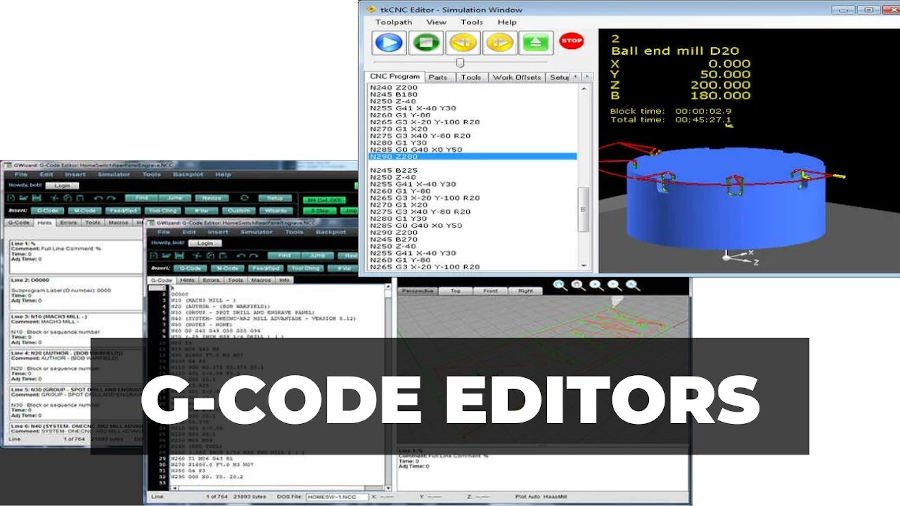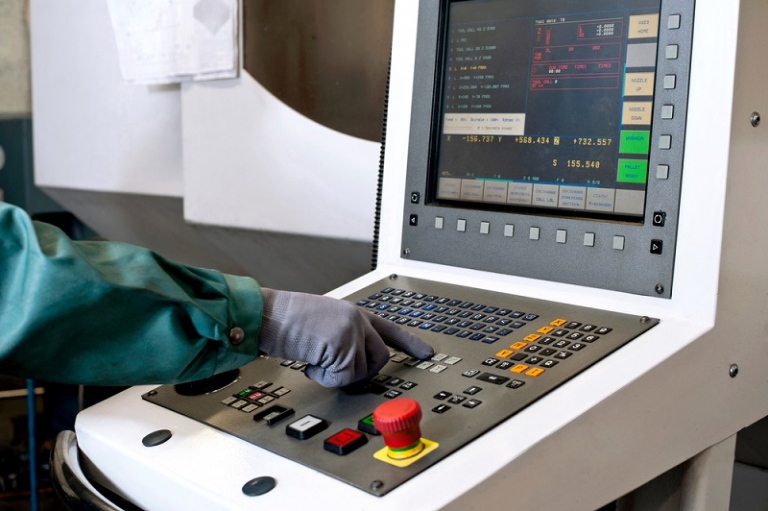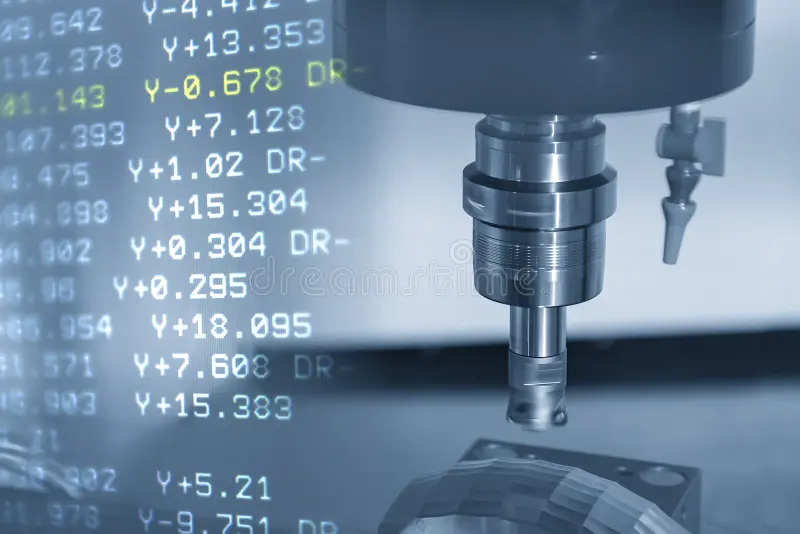Introduction
G-Code, often dubbed as the “universal language of CNC machining,” serves as a critical element in modern manufacturing and CNC (Computer Numerical Control) processes. But what makes it so essential? This guide aims to delve deep into this enigmatic yet pivotal language. Whether you’re a hobbyist looking to DIY your next project or a professional aiming for optimized production, understanding G-Code is the first step towards mastering the world of automated manufacturing. Read Our Introduction to CNC Machining Basics
In this comprehensive guide, you’ll find everything you need to get started: from the rudimentary basics of G-Code to writing your own codes and troubleshooting common errors. It’s not just a technical guide; it’s your roadmap to the intricate world of CNC machinery and automated manufacturing. Through a blend of theory, practical advice, and hands-on tips, we will navigate the complexities of G-Code, making it accessible and manageable for beginners.
So, why should you, as a beginner, invest time in learning G-Code? The answer is simple but profound: mastering G-Code opens doors to a new realm of possibilities. You can create intricate designs, automate complex tasks, and execute precision-based projects, all while minimizing errors and reducing material waste. In short, G-Code empowers you to take your creative or industrial projects to the next level.
Table of Contents
Understanding G-Code Basics
What is G-Code?
G-Code, or Geometric Code, is the cornerstone of CNC machining and modern manufacturing. It’s a language, but not in the way English or Spanish is. Instead, G-Code is how you communicate with a CNC machine to tell it what to do, how to do it, and in what sequence. Think of it as the DNA of a manufacturing process. Every move, every cut, every operation that the machine performs is dictated by this set of instructions.
Why is G-Code So Important?
If you’re venturing into CNC machining or any form of automated manufacturing, understanding G-Code is non-negotiable. Why? Because it’s how you translate a digital design into a tangible product. A solid grasp of G-Code enables you to optimize machine operations, minimize errors, and enhance productivity. In simpler terms, it’s like learning the rules of a game; you can’t really play, much less win, if you don’t know them.
Structure and Syntax of G-Code
Understanding G-Code isn’t just about memorizing commands; it’s about grasping the structure and syntax that make those commands meaningful. A typical G-Code command might look like this: G00 X10 Y20. In this example, G00 is the command for rapid movement, while X10 and Y20 are coordinates. Knowing how to read, write, and interpret these instructions is crucial for effective CNC machining.
Familiarize Yourself with G-Code Terminology
When diving into the world of G-Code, you’ll encounter a whole new vocabulary. Terms like ‘Spindle,’ ‘Feed Rate,’ or ‘Toolpath’ might sound foreign initially, but they’re essential for understanding how G-Code interacts with CNC machines. For instance, the ‘Spindle’ refers to the part of the machine that holds the tool, while ‘Feed Rate’ indicates the speed at which the tool moves.
Writing and Editing G-Code

Tools for Creating G-Code
Before you start writing G-Code, it’s crucial to choose the right editor for your needs. There are several types:
- Online G-Code Editors: These are web-based platforms that offer basic G-Code editing capabilities. They are convenient but may lack advanced features.
- Dedicated Software: Software like Fusion 360 provides a more robust environment for G-Code generation and editing, complete with simulation features.
Writing G-Code from Scratch
If you’re a beginner, the idea of writing G-Code from scratch may seem daunting. However, once you understand its structure and syntax, it becomes a straightforward task.
- Choosing a Starting Point: Your first step is to decide where your program will start in terms of the machine’s coordinate system.
- Defining Tool Path and Coordinates: Next, you’ll need to specify the path that the machine’s tool will follow.
- Incorporating Commands: Finally, you’ll insert the appropriate G-Code commands to guide the machine’s movements.
Tips for Efficient G-Code Writing
Writing efficient G-Code is an art form. Here are some tips to optimize your code:
- Use Comments: Comments, marked by a semicolon, can help clarify complex sections of your code.
- Optimize Feed Rates: Different operations may require different speeds, and optimizing these can result in more efficient machining.
Editing Existing G-Code Files
Sometimes, you’ll need to make adjustments to pre-existing G-Code files. Whether it’s modifying feed rates or adding new commands, understanding how to edit these files is crucial.
- Changing Parameters: Learn how to safely alter tooling parameters without compromising the final product.
- Adding or Removing Commands: Occasionally, you’ll find that you need to add or remove specific commands to enhance the program’s functionality.
Testing and Troubleshooting G-Code

Importance of Simulating G-Code Programs
Before you let your CNC machine execute any G-Code, it’s vital to run simulations. This step helps in:
- Identifying Errors and Collisions: By simulating the G-Code, you can spot potential errors and collisions that could damage the machine or the material.
- Verifying Tool Path Accuracy: Simulations allow you to double-check if the tool paths are as intended, helping you avoid costly mistakes.
Simulation Tools
Various tools can assist in G-Code simulation:
- Built-in Simulators: Some G-Code editors offer built-in simulation features.
- Third-party Software: Specialized software can provide more detailed visualizations and analyses.
Common G-Code Errors and Troubleshooting
No matter how experienced you are, errors are inevitable. Here are some common issues:
- Syntax Errors: These occur when commands are written incorrectly. They are often easy to spot and correct.
- Tool Path Deviations: If the machine doesn’t move as expected, the issue often lies in the G-Code. Check your coordinates and commands.
Troubleshooting Tips
Effective troubleshooting can save both time and resources. Here are some tips:
- Start with the Basics: Before diving into complex solutions, always check for simple errors like incorrect command syntax or machine settings.
- Consult the Manual: Every CNC machine comes with a manual that includes troubleshooting guidelines specific to that model.
Conclusion
G-Code is more than a set of commands; it’s a language that has revolutionized the world of manufacturing and CNC machining. From understanding its basics to mastering the art of writing and editing G-Code, this guide aims to provide a comprehensive roadmap for anyone new to this powerful language. As with any skill, practice makes perfect. The more you experiment with writing, editing, and troubleshooting G-Code, the more proficient you’ll become. So, take the plunge and start your journey towards mastering G-Code today. Your future projects will thank you for it.
FAQ
What is G-Code?
G-Code is a programming language used for CNC machining and automated manufacturing processes. It comprises a series of commands that control how a machine moves, cuts, and shapes material.
Why is it essential to learn G-Code?
Learning G-Code is crucial for anyone involved in CNC machining or automated manufacturing. It allows for the translation of digital designs into tangible products.
Can I edit existing G-Code files?
Yes, existing G-Code files can be edited, but it’s essential to understand the original program’s structure and commands to avoid errors.
What tools can help me write and edit G-Code?
Various G-Code editors are available, ranging from basic online platforms to more advanced, dedicated software that includes simulation features.
How can I troubleshoot G-Code errors?
Start by running a simulation to identify potential errors and collisions. If issues persist, consult your machine’s manual and double-check your commands and coordinates.

